When we were planning our trip to Maleka I saw it written as Malacca, Melaca and Melakka so I decided to wait until I was there before I gave this blog a title. Most of the signs coming into town and all the hotel signage spells it Maleka, but even here there is some variation in spelling! Apparently, Malacca has now officially become Maleka.
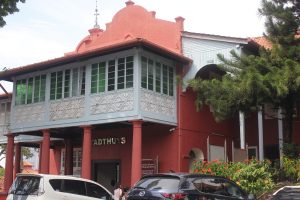

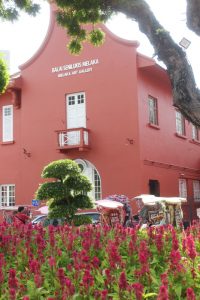

I wanted to go to Maleka for years. The Arabs, the Spaniards, the Portuguese, the Dutch and the English have all left their mark on this once thriving shipping port. Originally a small fishing village, it was discovered and claimed by Iskander Sha around 1402. He was attracted by the good port and its location on the narrowest point of the Malacca Straits.
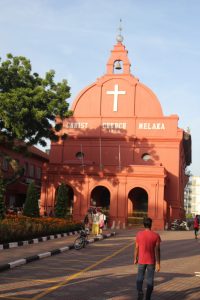

The original Dutch Church became the Church of England Church.
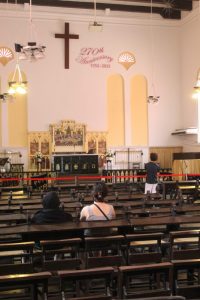

Interior of the Church.
Maleca quickly became a thriving trading port connecting the Indian Ocean to the South China Sea, enabling trade from India, Persia and the Arabian Peninsula. It was recognised for its safe and secure warehouses.
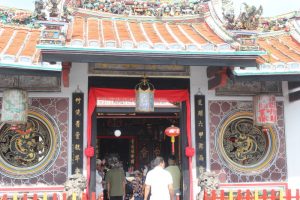

Modern temple.
Following the 1481 Papal Bull which was later called the Treaty of Tordesillas, Spain and Portugal agreed to divide the World into two spheres of expansion, the Portuguese settled in the Cape of Good Hope, India and parts of Asia as remote as Japan. They quickly conquered Melaka. They were trading in spices. Then in 1641 the Dutch claimed the area but later the British arrived and overpowered the Dutch. In 1824 the English negotiated control of the region. The Dutch had withdrawn by 1825.
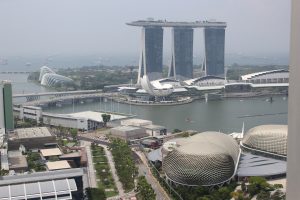

This mix of nationalities has left a diverse array of buildings, maritime monuments, culture, religions and ethnic groups. Inter marriage of so many ethnic groups has created a unique cuisine called Baba-Nyonya or Peranakan. The City became a UNESCO World Heritage site in 2008.
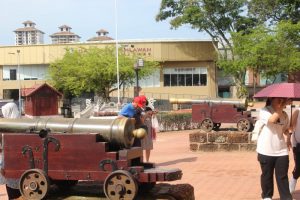

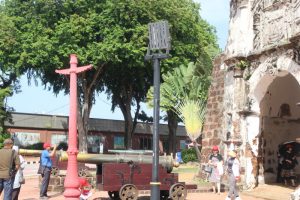

Old fort and Church.
Many of the older buildings are concentrated in one part of town near the river. Most are in use as shops, some are cafes, museums or galleries, some are neglected and falling apart and there are some signs of modern but sympathetic renovations.
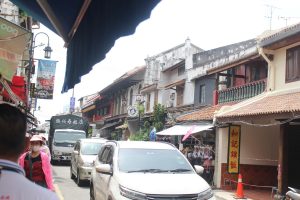

Old shop fronts in Jonkers Street and traffic jam.
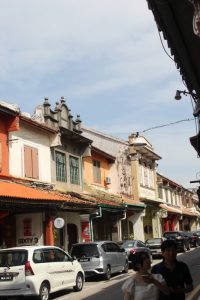

I like to view new places from the water, if possible. I like a river cruise, whether it’s on the Oxford River, the Rhine, in Saigon, a ferry taxi from our hotel in Bangkok, on the Hong Kong Harbour or on the river in Melaka.
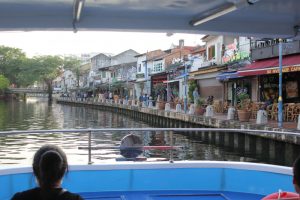

Older buildings along the river.
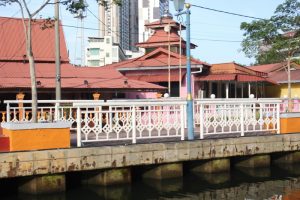

Older, restored houses on the river contrasting with a modern tower block behind.
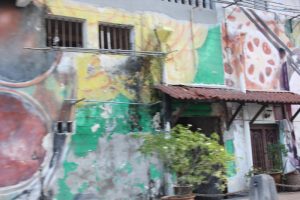

Old painted godowns along the river.
Setting off from the quay we were surprised to see unidentifiable animals in the water, swimming fast. (Later we discovered they were monitor lizards, . They live on the river banks and in the river and grow up to 3m (9 foot) in length. They have adapted to living in the water.) Many older buildings are on the edge of the river. A lot feature street art. So many places to eat! The river is crossed by several foot bridges.
We wanted to see more of the older buildings, so we organized a car and driver to take us to places of interest. It was very hot during the day, places we wanted to see were between the river and the sea, so covering a large area. We found the driver well informed. I was able to jump out and take photos and read the signage. It was really interesting seeing new apartments and shopping malls, too, plus the museums and art galleries.
Our hotel had been suggested to us by our nephew. We had a river view room with a balcony with chairs, a table and candles, lit at night. The hotel was so luxurious and comfortable. Our bathroom had sliding opaque windows allowing views of the river from the bath. It was so roomy and lovely after the last hotel we were in. The cafe and grill served meals throughout the day, there was a library with a coffee machine and snacks and a gym. I know, it’s crazy to still count minutes ‘in the zone’ when you’re on holidays, but I do, so I spent time in the gyms of the three hotels we’ve stayed in while we have been in Singapore and Melaka. I really like a good hotel gym.
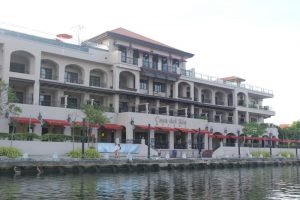

View of our hotel from the river.
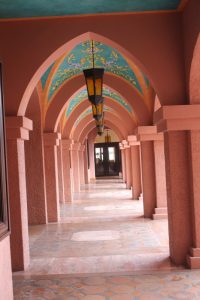

Hotel enfilade, with painted ceiling, one of many at our hotel.
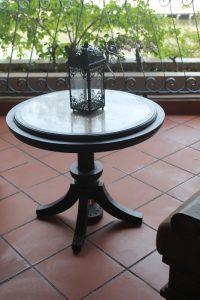

Our balcony overlooked the river, one of the few cool places in the evening. Melakka was very hot!
Despite its rich history, many historical indicators have not been maintained, been built over or simply neglected. We were surprised at how few buildings remain. Do your own research before you go to Melaka if you’re interested in the history as information and maps are sketchy.
Melaka is a UNESCO World Heritage site. There are some interesting things to see and read, numerous places to eat, plenty of opportunities to buy mementos and also modern shopping malls with all the usual brands and some particular to Malaysia. We took a car from Singapore for the three and a half hour drive and went on the river trip that afternoon after a wander down famous Jonker Street. The next day we arranged a car and driver to show us the historical sites and looked in local galleries and museums. I think we could have done every thing we wanted in two days and nights but we spent the third day wandering around and resting. Early the fourth day we took the car and driver back to Singapore.


